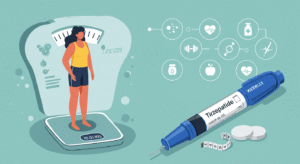Imagine waking up one day to find that something invisible is subtly reshaping your mood, energy, and health. This isn’t the plot of a science fiction movie; it’s the reality of how environmental factors influence our hormone levels daily.
Invisible Influences
Hormones, the body’s chemical messengers, regulate nearly every biological process, from growth and metabolism to mood and reproductive health. What many don’t realize is that our environment is teeming with substances that can mimic or disrupt these crucial hormones. Chemicals used in agriculture, found in plastics, or released from factories can interfere with our endocrine systems.
Common Culprits
One of the most infamous endocrine disruptors is bisphenol A (BPA), commonly found in plastic bottles and containers. BPA can mimic estrogen, potentially leading to reproductive health issues and altered development. Similarly, phthalates, used to make plastics more flexible, can interfere with testosterone, affecting male fertility and development.
Pesticides are another significant concern. Substances like atrazine, used widely in agriculture, can disrupt the production of sex hormones, leading to abnormalities in reproductive organs and early puberty.
The Air We Breathe
It’s not just substances we touch or ingest that affect our hormones; the air we breathe plays a role too. Industrial pollutants and vehicle exhaust release a cocktail of chemicals into the air, including polychlorinated biphenyls (PCBs) and dioxins. These toxins can alter hormone function and have been linked to various health issues, including cancer and heart disease.
The Water Around Us
Our water sources are not immune to contamination. Pharmaceuticals, industrial runoff, and agricultural chemicals can seep into groundwater and surface water, introducing hormone-disrupting chemicals into our drinking water. This exposure can have long-term effects on our hormonal balance, affecting everything from stress levels to thyroid function.
Taking Action
While the situation might seem daunting, there are effective ways to mitigate these risks. Using air purifiers in homes, opting for BPA-free and phthalate-free products, and supporting and advocating for environmental protections are steps we can all take. Additionally, being informed about and involved in local environmental policies can help reduce the overall burden of these disruptors.
Understanding and addressing the impact of environmental factors on hormone levels is crucial for our health. By taking proactive steps to minimize exposure to endocrine disruptors, we can protect our hormonal health and safeguard our overall well-being. This invisible influence doesn’t have to dictate our health outcomes; with knowledge and action, we can assert control over our environments and our bodies.


